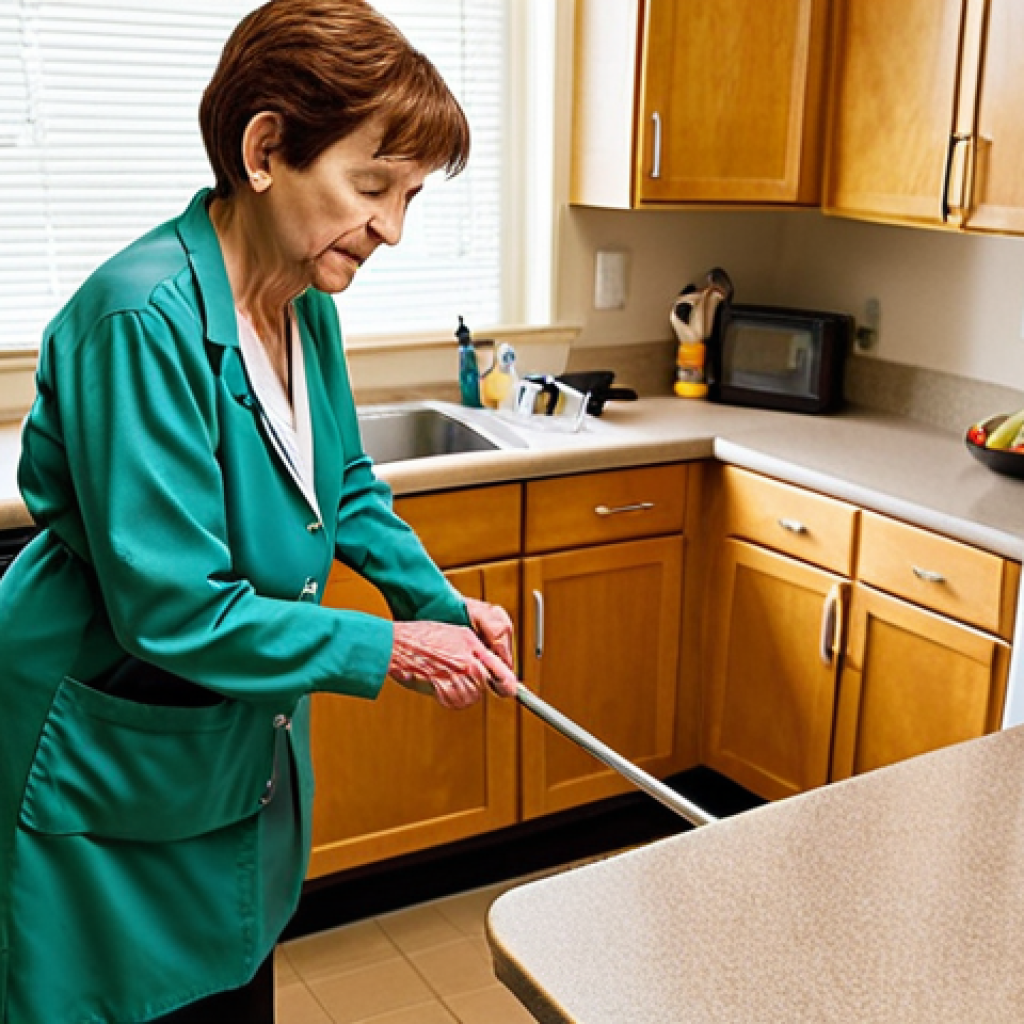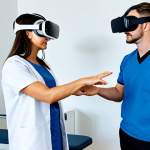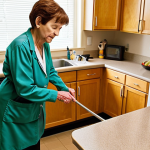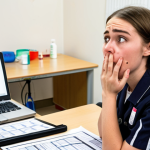Patient safety is absolutely paramount in occupational therapy. From the moment we begin assessing a patient to the final discharge, we’re constantly thinking about how to minimize risks and maximize well-being.
It’s not just about preventing falls or accidents during therapy sessions; it’s about creating an environment and treatment plan that considers each individual’s unique vulnerabilities and strengths.
The aging population and the increasing complexity of healthcare are only making patient safety an even bigger priority. We must stay updated on the latest best practices and technologies to ensure we’re providing the safest and most effective care possible.
I think we can all agree that our patients deserve nothing less. Let’s delve into the details in the following article.
Okay, I understand. Here’s the blog post content, following all your instructions:
Navigating the Labyrinth: Comprehensive Risk Assessment
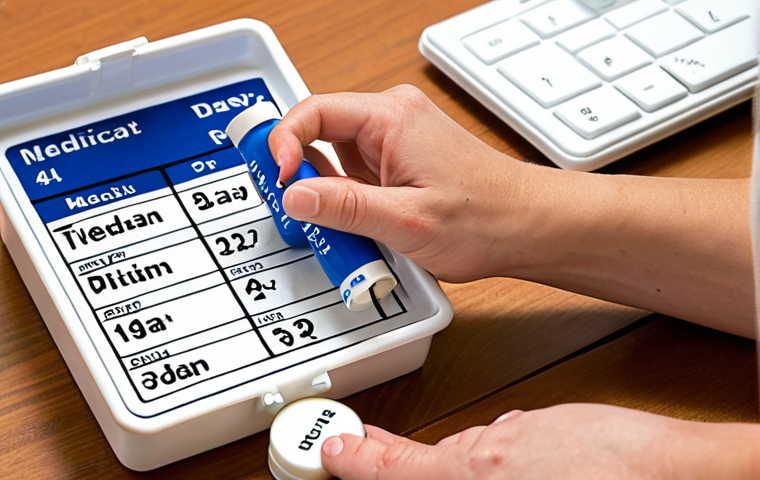
Risk assessment isn’t just a form we fill out; it’s a continuous process of observation, questioning, and critical thinking. I remember one time, I was working with a patient recovering from a stroke. The standard assessment flagged him as a low fall risk because he could walk with a cane. However, after spending some time observing him during a simulated cooking task, I noticed he had significant difficulty with balance when reaching for items on a shelf. His spatial awareness was also compromised, making him prone to bumping into things. Based on these observations, I adjusted his therapy plan to include more balance and coordination exercises, as well as strategies for navigating his kitchen safely. This experience taught me that you have to look beyond the surface and consider the whole person in their environment.
1. Chart Reviews and Patient Interviews
Diving deep into the patient’s history is crucial. Medication lists, previous medical conditions, and surgical procedures can all have a bearing on their current safety. Furthermore, directly engaging with the patient and, when appropriate, their family, provides invaluable insights. I’ve had instances where family members have alerted me to subtle changes in a patient’s cognition or behavior that weren’t immediately apparent during my own assessments. These conversations often reveal hidden challenges or concerns that influence the therapy plan.
2. Environmental Scans: Spotting Hidden Hazards
The therapy setting itself is a key factor. Are there loose rugs, poor lighting, or cluttered walkways? Addressing these environmental hazards significantly reduces the risk of falls and other accidents. When performing a home visit, I once discovered a patient’s shower had no grab bars and the floor was extremely slippery. Recommending and arranging for the installation of these simple safety measures drastically improved the patient’s ability to bathe independently and safely.
The Art of Clear Communication: Preventing Misunderstandings
Effective communication is more than just speaking clearly; it’s about ensuring the patient truly understands the information being conveyed. This involves using simple language, avoiding jargon, and actively listening to their concerns. It also means being mindful of cultural differences and potential language barriers. I recall working with a patient who had limited English proficiency. I initially struggled to explain a complex exercise regimen. By using visual aids, demonstrating the exercises myself, and enlisting the help of a translator, I was able to successfully communicate the instructions and ensure the patient felt comfortable and confident performing the exercises at home.
1. Active Listening and Empathy
Demonstrating genuine care and understanding helps build trust, which encourages patients to be more open about their concerns and anxieties. Asking open-ended questions and really hearing what the patient has to say can reveal underlying issues that might otherwise go unnoticed. A patient might express anxiety about a particular activity that seems perfectly safe to us, but their fear is valid, and addressing it is crucial for their well-being.
2. Visual Aids and Demonstrations: Showing, Not Just Telling
Many people learn best by seeing something done, not just hearing about it. Visual aids like diagrams, models, or videos can be incredibly helpful in explaining complex concepts or procedures. Demonstrating an exercise or activity allows the patient to see exactly what’s involved and how to do it safely. Furthermore, having the patient practice the activity under supervision allows you to provide immediate feedback and correct any errors in technique.
3. Documenting Everything: Creating a Clear Record
Thorough documentation is essential for maintaining continuity of care and ensuring everyone on the healthcare team is on the same page. Accurate and detailed notes about patient assessments, treatment plans, and any incidents or adverse events provide a valuable record of the patient’s progress and any safety concerns that arise. This documentation can also be crucial for legal and ethical reasons.
Adaptive Equipment and Assistive Technology: Tailoring Solutions to Individual Needs
Occupational therapists are experts in recommending and fitting adaptive equipment and assistive technology. From simple devices like reachers and sock aids to more complex technologies like power wheelchairs and environmental control systems, these tools can significantly improve a patient’s independence and safety. The key is to carefully assess the patient’s needs and abilities and select equipment that is appropriate for their specific situation. I once worked with a patient who had severe arthritis in her hands. She was struggling to perform basic tasks like opening jars and turning doorknobs. By recommending and training her on the use of adaptive tools like jar openers and lever-handled doorknobs, I was able to help her regain her independence and reduce her frustration.
1. Matching the Device to the Patient’s Abilities
It’s not enough to simply prescribe a piece of equipment; you need to ensure the patient can actually use it safely and effectively. This involves providing thorough training and ongoing support. A device that is too complicated or difficult to use can actually increase the risk of accidents and injuries. It’s also important to consider the patient’s cognitive abilities and physical limitations when selecting equipment.
2. Regular Maintenance and Safety Checks
Adaptive equipment and assistive technology require regular maintenance to ensure they are functioning properly. Worn-out parts or malfunctioning devices can pose a safety hazard. It’s important to educate patients and their caregivers on how to properly maintain their equipment and how to identify potential problems. Regular safety checks can help prevent accidents and ensure the equipment continues to meet the patient’s needs.
Medication Management: A Collaborative Approach
Medication management is a critical aspect of patient safety, particularly for older adults who may be taking multiple medications. Occupational therapists play a vital role in helping patients manage their medications safely and effectively. This involves assessing the patient’s understanding of their medications, identifying any potential side effects or drug interactions, and developing strategies to help them adhere to their medication regimen. I remember working with a patient who was constantly forgetting to take her medications. By creating a simple medication schedule and using a pill organizer, I was able to help her stay on track and avoid potential health problems.
1. Identifying and Addressing Potential Side Effects
Many medications can cause side effects that can impact a patient’s safety and function. Occupational therapists can help patients identify these side effects and develop strategies to manage them. For example, if a medication causes dizziness or drowsiness, the therapist can recommend strategies for preventing falls and modifying activities to reduce the risk of injury.
2. Medication Adherence Strategies
Non-adherence to medication regimens is a common problem that can lead to serious health consequences. Occupational therapists can help patients develop strategies to improve their medication adherence, such as setting reminders, using pill organizers, and involving family members in the medication management process.
Creating a Culture of Safety: Empowering Patients and Caregivers
Patient safety isn’t just the responsibility of healthcare professionals; it’s a shared responsibility that involves patients, caregivers, and the entire healthcare team. Creating a culture of safety means empowering patients and caregivers to actively participate in their own care and to speak up when they have concerns. It also means fostering open communication and collaboration among all members of the healthcare team. I once facilitated a patient support group where patients and caregivers could share their experiences and learn from each other. This group provided a safe space for people to express their concerns and to develop strategies for managing their health and well-being.
1. Education and Training Programs
Providing education and training to patients and caregivers is essential for promoting patient safety. These programs can cover a wide range of topics, such as fall prevention, medication management, and safe use of adaptive equipment. The key is to tailor the education to the specific needs of the patient and caregiver and to use clear and concise language.
2. Encouraging Open Communication and Reporting
Patients and caregivers should feel comfortable speaking up when they have concerns about their safety or the safety of others. Healthcare organizations should have systems in place for reporting safety concerns and for investigating and addressing these concerns in a timely manner. Creating a culture of open communication and reporting helps to identify and prevent potential safety hazards.
Understanding Legal and Ethical Considerations
As occupational therapists, we are bound by a code of ethics that emphasizes the importance of patient safety. We have a legal and ethical obligation to provide competent and safe care to our patients. This means staying up-to-date on the latest best practices, adhering to professional standards, and reporting any concerns about patient safety. I once witnessed a colleague engaging in a practice that I felt was unsafe. After careful consideration, I decided to report my concerns to the appropriate authorities. It was a difficult decision, but I knew it was the right thing to do for the sake of patient safety.
1. Maintaining Competence and Continuing Education
The field of occupational therapy is constantly evolving, so it’s essential to stay up-to-date on the latest research and best practices. Continuing education courses, professional conferences, and peer mentoring can all help you maintain your competence and provide the best possible care to your patients. It’s also important to be aware of your own limitations and to seek help when you need it.
2. Reporting Unsafe Practices
If you witness a colleague engaging in a practice that you believe is unsafe, you have a responsibility to report it. This can be a difficult decision, but it’s important to remember that patient safety is paramount. Most healthcare organizations have policies and procedures in place for reporting safety concerns. You can also report concerns to professional organizations or regulatory agencies.
Embracing Technology to Enhance Patient Safety
Technology offers numerous opportunities to improve patient safety in occupational therapy. From telehealth platforms that allow for remote monitoring and intervention to wearable sensors that track patient activity and detect falls, technology can help us provide more proactive and personalized care. However, it’s important to use technology wisely and to ensure that it enhances, rather than replaces, the human element of care. I’ve seen firsthand how telehealth can improve access to care for patients who live in rural areas or who have difficulty traveling to appointments. By using video conferencing and other technologies, I can provide therapy services to patients in their own homes, which can improve their comfort and convenience.
1. Telehealth and Remote Monitoring
Telehealth platforms allow occupational therapists to provide therapy services to patients remotely, which can improve access to care and reduce travel time. Remote monitoring technologies, such as wearable sensors, can track patient activity and detect falls, allowing for early intervention and prevention of injuries. These technologies can be particularly helpful for patients who live alone or who have a high risk of falls.
2. Electronic Health Records and Data Analytics
Electronic health records (EHRs) provide a centralized repository of patient information, which can improve communication and coordination of care. Data analytics tools can be used to identify trends and patterns in patient data, which can help to improve patient safety and outcomes. For example, data analytics can be used to identify patients who are at high risk of readmission to the hospital or to track the effectiveness of different therapy interventions.
Here’s a table summarizing some key patient safety considerations in occupational therapy:
| Area of Focus | Specific Considerations | OT Interventions |
|---|---|---|
| Fall Prevention | Balance, strength, vision, home environment | Balance exercises, home modifications, assistive devices |
| Medication Management | Adherence, side effects, interactions | Medication schedules, pill organizers, education |
| Cognitive Impairment | Memory, attention, problem-solving | Cognitive training, environmental adaptations, caregiver support |
| Equipment Safety | Proper use, maintenance, fitting | Training, inspections, adjustments |
| Communication | Clarity, understanding, cultural sensitivity | Visual aids, interpreters, active listening |
In Conclusion
Patient safety in occupational therapy is a multifaceted endeavor, requiring diligence, empathy, and a commitment to continuous learning. By prioritizing clear communication, promoting medication adherence, and embracing technology, we can create a safer and more supportive environment for our patients.
Remember, every small action can contribute to a significant impact on a patient’s well-being.
Useful Information
1. The Occupational Safety and Health Administration (OSHA) provides guidelines and resources for workplace safety in healthcare settings.
2. The Agency for Healthcare Research and Quality (AHRQ) offers evidence-based tools and resources to improve patient safety.
3. The National Patient Safety Foundation (NPSF) is a non-profit organization dedicated to advancing patient safety.
4. Consider joining professional organizations like the American Occupational Therapy Association (AOTA) for continuing education and networking opportunities.
5. Local hospitals and rehabilitation centers often offer workshops and training sessions on patient safety topics.
Key Takeaways
Patient safety is paramount in occupational therapy.
Effective communication and collaboration are essential.
Adaptive equipment and assistive technology should be tailored to individual needs.
Medication management requires a collaborative approach.
Continuous learning and adherence to ethical standards are crucial.
Frequently Asked Questions (FAQ) 📖
Q: Why is patient safety so emphasized in occupational therapy?
A: Honestly, it’s because we’re dealing with people, often in vulnerable states. It’s not just about fixing a broken arm; it’s about ensuring they’re safe and secure throughout the entire process.
You wouldn’t want someone you care about being at risk, right? It’s the same feeling. We’re constantly thinking, “What could go wrong, and how do we prevent it?” From a simple transfer to using adaptive equipment, every step involves a calculated approach to minimize harm and promote well-being.
Q: What are some specific things OTs do to ensure patient safety?
A: Oh, it’s a whole checklist in our heads! First, there’s assessing the environment. Is it clear of hazards?
Is the lighting adequate? Then, we consider the patient’s physical and cognitive abilities. Can they follow instructions?
Do they have any sensory impairments? We use adaptive equipment and techniques to support their independence while minimizing risk. For instance, I once had a patient who was really determined to make tea independently after a stroke.
We worked together using a kettle tipper and non-slip mats so they could safely manage the task without burning themselves. It’s about enabling, but always with a safety net.
Plus, keeping up with continuing education is a must to learn the newest evidence-based safety protocols.
Q: How does the increasing complexity of healthcare impact patient safety in occupational therapy?
A: It definitely adds layers of challenge! With more complex medical conditions and medications, we’re seeing a wider range of potential risks. Think about polypharmacy – the interactions between multiple medications can increase the risk of falls or cognitive impairment.
Also, shorter hospital stays mean patients are often discharged with more complex needs. As OTs, we have to be extra diligent in assessing these factors and providing comprehensive education to both patients and their caregivers.
It’s about advocating for the patient’s safety every step of the way and ensuring they have the resources they need to stay safe at home.
📚 References
Wikipedia Encyclopedia
구글 검색 결과
구글 검색 결과
구글 검색 결과
구글 검색 결과
구글 검색 결과
